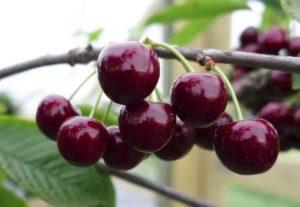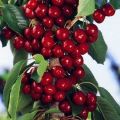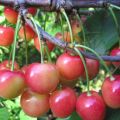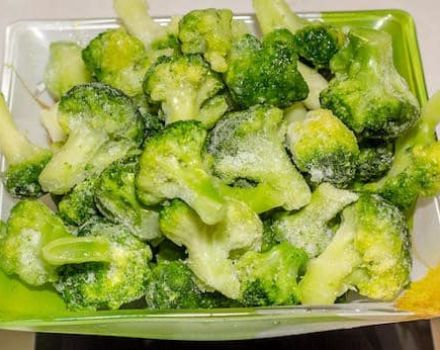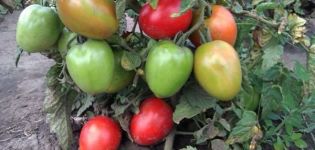Characteristics and description of sweet cherries of Napoleon variety, planting and care
Sweet cherries of the Napoleon variety gained fame in Russia more than 100 years ago. It is grown mainly in the southern regions. Garden culture is appreciated for its high taste and keeping quality of large fruits, sustainable fruiting. When cultivated in appropriate climatic zones, it takes root well, does not require special care during dry periods.
How the variety is bred
The origin of the Napoleon variety is Western Europe, late 18th, early 19th centuries. Country of selection - France.
Description
Sweet cherry Napoleon is a mid-season, large-fruited variety. Grown in sun-warmed areas with structured, nutritious soil. Damp, cool weather leads to a decrease in yield, damage by pathogens.
general description
The trees are tall, with a dense crown in the form of a ball. Flowering - in late spring, fruiting - for 4-5 years, in early summer. The variety Napoleon is self-fertile. Has 2 subspecies: black Napoleon cherry, pink Napoleon. Differences also concern the shape and size of the fruit.
Advantages
Sweet cherry Napoleon withstands a short-term drop in temperature to -30 degrees, provided that the trunk and root zone are covered. The deep roots allow it to withstand a long dry period. Late flowering excludes the influence of recurrent frosts on the ovaries. Blooming trees serve as a decoration for the personal plot.
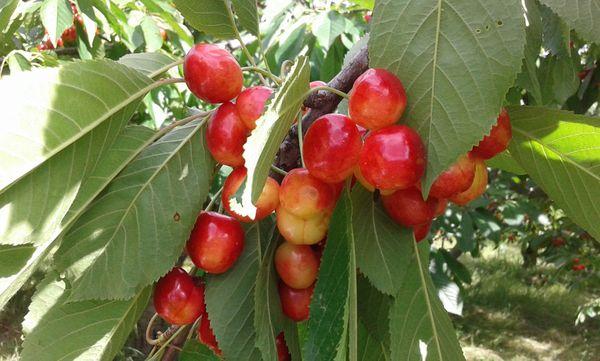
disadvantages
Prolonged low temperatures cause the death of Napoleon's flower buds, frost. For cross-pollination on the site, it is necessary to plant other varieties of cherries. Does not withstand proximity of closer than 5 meters with an apple tree, pear, plum. Napoleon pink adapts less well in cool and rainy summers, which is why it is not very widespread
Bud
There is a growth bud on the bouquet branches in the center, flowering buds on the sides.
Leaf and flower
Cherry leaves are large, dark green, elongated, with a pointed tip. White buds are collected in inflorescences of 3 flowers on bouquet branches.
Fetus
Sweet cherries Napoleon - oval or round, medium or above average, juicy.
Weight
Black fruit - from 6 to 6.5 grams, pink - up to 9-10 grams.
Height
Cherry Napoleon black - 1.8 centimeters; Napoleon pink - 2.0 centimeters.
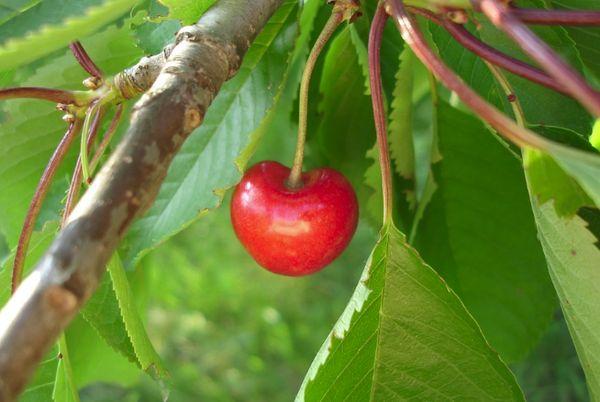
Width
Black berry - 2.0 centimeters, pink - 2.2 centimeters.
Thickness
Napoleon black - 2.2 centimeters, Napoleon pink - 2.4 centimeters.
Color
In the mature stage, the color of the fruit is dark red and bright pink. The ovary of Napoleon pink is pink-yellow, in black it is red.
Peduncle
Long, thin, well fixed.
Bone
The stone is medium, slightly narrowed, easily detached from the pulp.
general characteristics
The berries are attractive. They are used fresh and for conservation.
Taste qualities
Fruits are sweet when ripe. In an unripe state, pink-yellow fruits have a bitter taste.
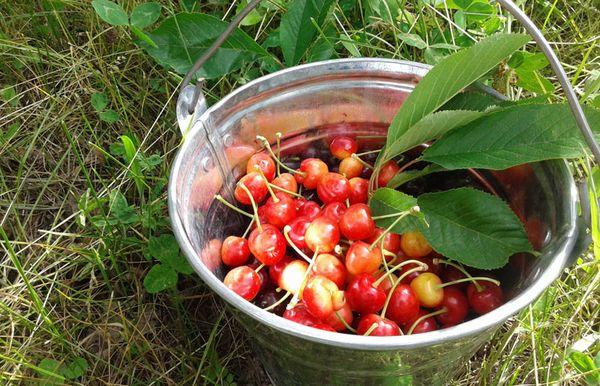
Content of nutrients
In 100 grams of sweet cherries Napoleon has a high content:
- vitamins C and E;
- potassium;
- magnesium;
- calcium.
In addition, there are:
- vitamins A, B, P;
- zinc;
- sulfur;
- iron;
- pectin.
Nutrition with cherries can provide a balanced intake of vitamins, micro- and macroelements.
Tree height and growth rate
The height of the crown of the sweet cherry Napoleon reaches 6.5 meters. The annual growth of shoots is 70-80 centimeters.
Flowering and ripening period
The buds bloom at the end of May. Berry picking starts after 3 weeks and ends at the end of June.
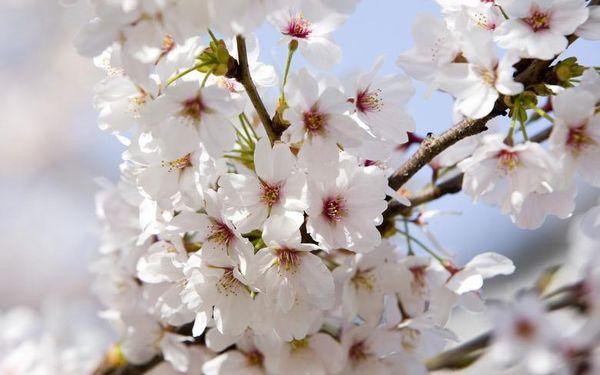
Yield
The average yield of Napoleon is up to 30 kilograms.
Transportability
Napoleon fruits have a dense flesh and skin, which ensures keeping quality and transportation over long distances.
Drought tolerance
After 3-4 years, the Napoleon cherry develops a powerful root system that provides the tree with moisture. Watering is needed for young seedlings and adult plants during flowering and pouring fruits.
Frost resistance
Fruit trees tolerate a drop in air temperature to -30 degrees.
Disease resistance
Sweet cherry Napoleon is susceptible to pathogenic lesions at high humidity and temperatures below 0 degrees.
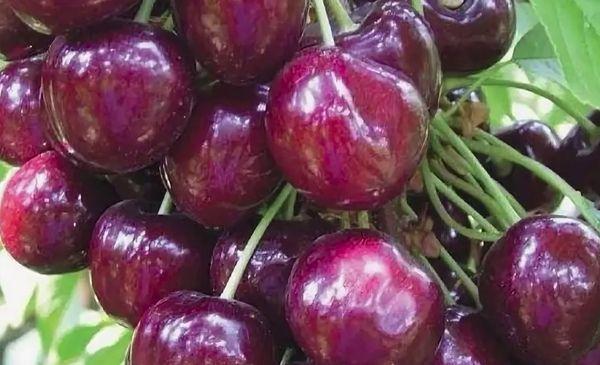
Fruit application
Taste qualities, composition of nutrients, properties of pulp and skin make it possible to use Napoleon cherry fruits not only fresh.
In cooking
Summer and canned compotes, juices are prepared from Napoleon cherries. Preserves and jams are obtained from a mixture of cherries with cherries, black currants.
In dietetics
Low-calorie sweet cherries: 50 calories - 100 grams. The consumption of fruits provides saturation and at the same time reduces the energy intensity of food. If you want to lose weight, the cherry diet is the best way.
In folk medicine
Fresh fruits have a beneficial effect on the intestinal tract. The high potassium content is good for the heart muscle. Vitamin C helps restore hemoglobin levels.
In cosmetology
Illuminating and nourishing masks made from crushed fruits are useful for the skin of the face and décolleté.
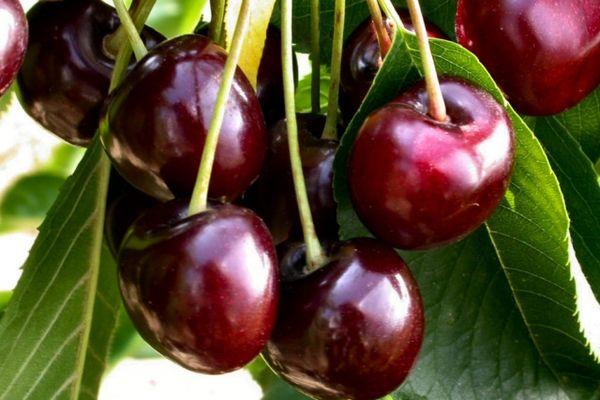
Basic soil requirements
Sweet cherry requires loose and fertile soil: black soil, loam, sandy loam.
Landing features
The pit is prepared in advance: in the fall, regardless of the planting date. At the bottom, 20 centimeters of expanded clay / fine gravel is poured, half the norm of the nutrient substrate. The procedure is necessary to improve the drainage properties and soil shrinkage, so as not to damage the small roots.
Sapling selection
Sweet cherry Napoleon is grown on rootstocks of cherries, wild cherries, which are frost-resistant, resistant to diseases and pests. This method makes it possible to cultivate a light, heat-loving plant in more severe climatic conditions.
When choosing a seedling, you need to pay attention to the upper part (cherry stem) and the lower part (rootstock).
Root system
The roots of the stock should be branched and not damaged.
Trunk
The bark of the tree should be shiny, tight-fitting, without breaking the integrity.
Age
Sweet cherries are planted in a permanent place at the age of 1-2 years.
Vaccination
The vaccination site should be inconspicuous, dry.
Planting timing
Planting dates depend on climatic conditions: in autumn or spring. Each case has its own pros and cons.
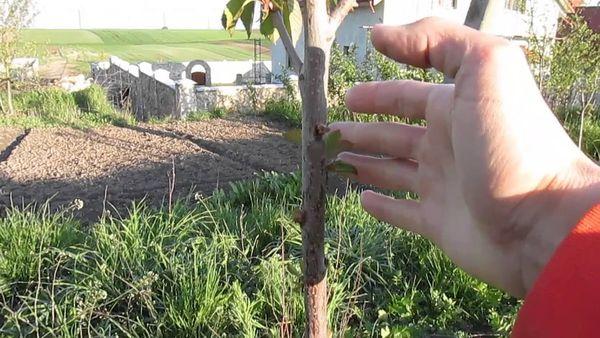
Autumn
In regions with a long, warm autumn, a cherry seedling is planted 14-20 days before the onset of a cold snap. This time is enough for the root system to take root.
Benefits
The root system has time to take root. In the spring, the plant will begin to develop in a new location.
disadvantages
Poorly developed roots can freeze under severe frosts and in a shelter. The seedling is generally weakened: in winter, the buds and bark may suffer.
Spring
With a sharp change in the seasons, the trees are planted in the spring, before the buds swell on the trees.
Benefits
Sweet cherry will not suffer from winter cold.
disadvantages
The development of the seedling is slowed down compared to the autumn planting. It will take about a month for a plant to adapt to a new location.
Site selection
Sweet cherry Napoleon must be grown in sunny areas protected from cold winds, without stagnant groundwater.
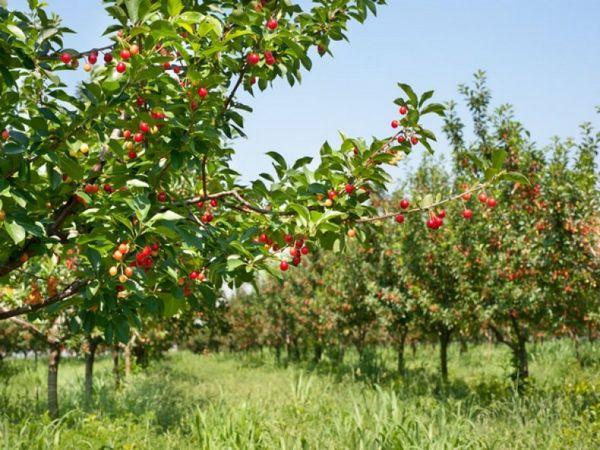
Pit preparation
Landing pit size: depth - 70 centimeters, diameter - 60 centimeters.
At the bottom, poured ½ of the nutrient substrate, which is prepared:
- from 2 glasses of ash;
- 2 buckets of humus;
- 2 buckets of fertile land.
Further manipulations with the seedling are carried out after 20 days (when planting in autumn) or in spring.
Landing
The remaining part is poured onto the previously poured and settled substrate, making a cone out of it. The tree is placed vertically in the planting hole. Holding the trunk, the roots are straightened over the filled soil. Further actions consist in the gradual filling of the planting pit with soil and its compaction.
The root collar should be just above ground level. A trunk circle is made, poured abundantly with warm water, mulched with hay or straw.
Pollinators
Sweet cherry Napoleon needs pollinators, as it is self-fertile. The best varieties for cross-pollination are other cherry varieties.
French Black
The variety is fruitful, resistant to low temperatures and fungal infection. The fruits are large, dark red, sweet and sour.
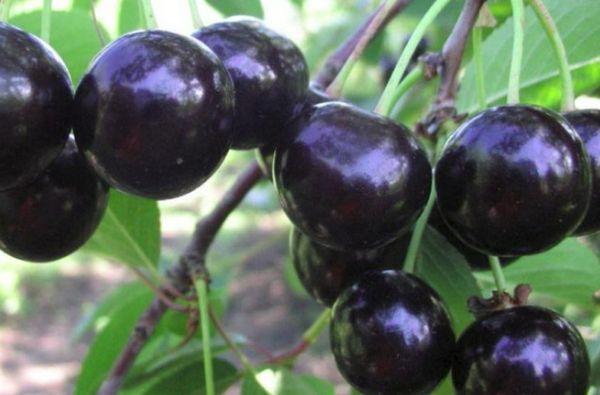
Big Star
A cherry variety recently bred by Italian breeders. Fruit weight reaches 12 grams. Productivity - up to 45 kilograms.
Large-fruited
Sweet cherry is resistant to adverse weather conditions, fungal spore infection. The berries are round, dark red, 12-16 grams.
Drogana yellow
Dessert variety. Fruits are yellow, up to 8 grams. Sweet cherry tolerates drought well, is affected by cherry fly, gray rot.
Valery Chkalov
A universal, early maturing, high-yielding variety, resistant to moniliosis. Included in the State Register in 1974. Fruits are dark red, sweet and sour, up to 8 grams.
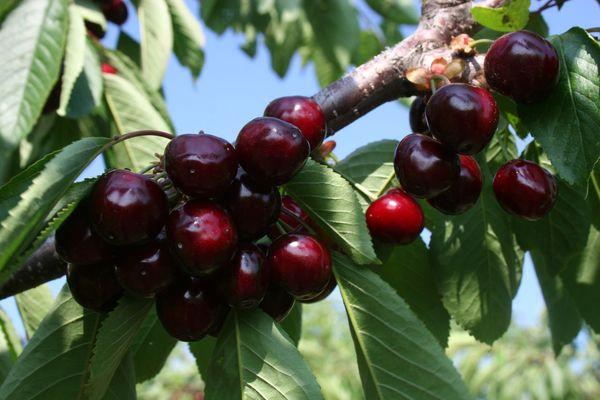
Cassini early
Fruits are sweet and sour, up to 5 grams, ripening at the end of May. The tree is susceptible to frost and pest damage.
Zhabule
Dessert variety, developed in France. Early ripe. Frost-resistant, resistant to pests. Fruits are medium in size, dark red, loose, sweet.
Early brand
Early ripe variety. Fruits - up to 3 grams, sour, not decaying. A mature tree does not exceed 3 meters, has a non-spreading, pyramidal crown.
Care secrets
Sweet cherry Napoleon needs a full range of agrotechnical techniques. Without their fulfillment, the tree will reduce productivity, it will hurt.

Watering
An adult tree with roots up to 4 meters deep requires watering in early June when ovaries begin to form. In dry, hot summer, cherries are watered once a month and in autumn - after the leaves fall.
Young trees are watered regularly: during the dry season - once every 5-7 days. With sufficient precipitation - at the end of flowering.Water consumption rate: 50 liters per seedling, 100 liters per mature tree.
Top dressing
Feeding cherries is necessary in spring and summer. With the awakening of the buds, the plant is watered with a diluted solution of a mullein (1:10) at the rate of 5 liters. During flowering, potash and phosphorus fertilizers (45 grams per square meter) are applied to the near-stem circle.
Pruning
For 5-6 years, cherries form a multi-tiered crown:
- the distance between the tiers is 50 centimeters;
- the number of skeletal branches per layer - 3-4;
- the height of the central conductor is 3-3.5 meters.
Pruning is done in spring (March) or fall (October). In this case, all branches growing inside the crown, tops, dry, broken, with signs of damage are removed. Removal of large branches is carried out on the ring. To prevent the crown from growing in breadth, the branches are cut to a side branch.
Preparing for winter
In dry autumn, water-charging irrigation is carried out. All mummified, dried fruits are removed from the branches. Fallen leaves are removed from the trunk circle. The earth under the tree is dug up to a depth of 30 centimeters. The lower part of the trunk and the root part are covered with spruce branches from frost, with a net - from mice and hares.
Diseases and pests, their prevention
Timely pruning, watering and preventive treatment of the trunk, branches, ovaries allow you to avoid infection with pathogens and prevent the attack of pests.
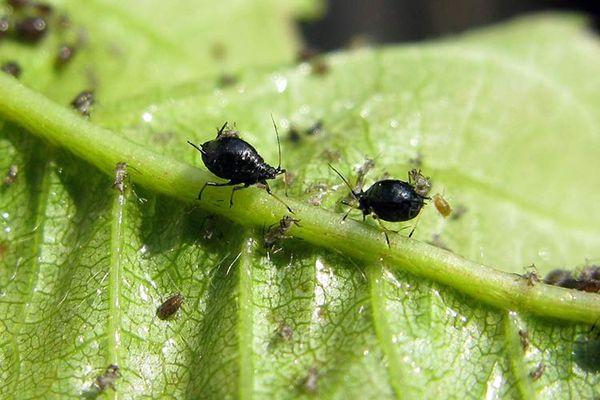
Resistant to fungus
Napoleon pink and black are not as susceptible to infection with the marsupial fungus (coccomycosis) and the ascomycete fungus (moniliosis), as other varieties of sweet cherry. The risk of injury arises under certain weather conditions.
High immunity to disease
Despite the low susceptibility to mycotic infection, it is necessary to carry out preventive measures that reduce the spore potential of fungi. The best way is fungicide treatment.
Copper oxychloride
Fungicide of protective contact action against fungal infection. The first spraying is carried out before the beginning of budding, the second - after the end of flowering. In adverse weather conditions, spraying can be carried out up to 6 times per season.
Bordeaux liquid
Bordeaux liquid is a copper-containing preparation. The properties and method of application are the same for products containing copper oxychloride.
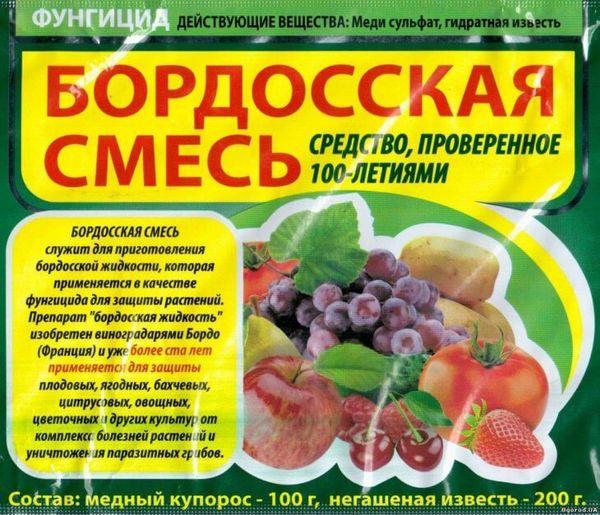
Cherry fly
The insect is the main pest of stone fruits of the middle and late ripening period. It lays eggs in a cherry ovary, from which the larvae are rejected and eat the pulp of the fruit.
Confidor
Contact action insecticide against sucking and gnawing pests. Does not penetrate into fruits, retains its effect for a month after spraying.
Actellic
Strong enteric poison; effective against most garden pests. Requires special care when using. Spray the cherries once, after the ovaries have formed.
Aphid
The cherry aphid attacks the green branches and leaves of the tree, feeding on their sap. Systemic pest control consists in removing weeds, ants, and chemical treatment.
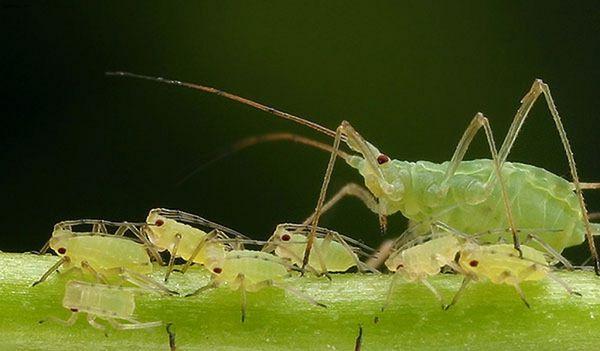
Sawfly
The insect lays eggs on the underside of the leaf in May-June, late July. Slime sawfly larvae destroy cherry leaves. Pupation occurs in the near-stem circle. Control methods: biological, chemical, manual collection of larvae.
Rot
Infection with gray rot spores occurs at the beginning of flowering, at low temperatures or high humidity. Treatment of the tree with fungicides is carried out before flowering.
Whitewash
Applying a solution of lime to the trunk is one of the ways to protect against pests and parasites, as well as from sunburn.
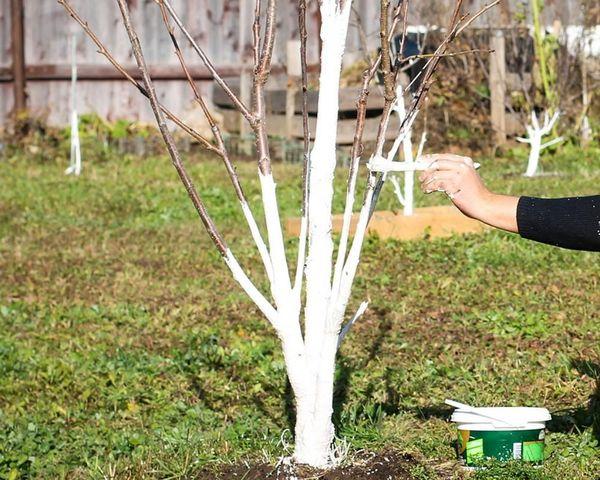
Wrapping the trunk
Covering the lower part of the trunk with a net, roofing felt, spruce branches is necessary to protect it from frost and rodents.
Mulching
For young cherries, mulching of the trunk circle is important in hot, dry summers.
Insulation of the crown of seedlings
The cultivation of sweet cherries Napoleon in the northern regions is associated with the risk of freezing and death of the tree. The crown of a young tree is covered from the cold with burlap stuffed with hay, fixed on the trunk.
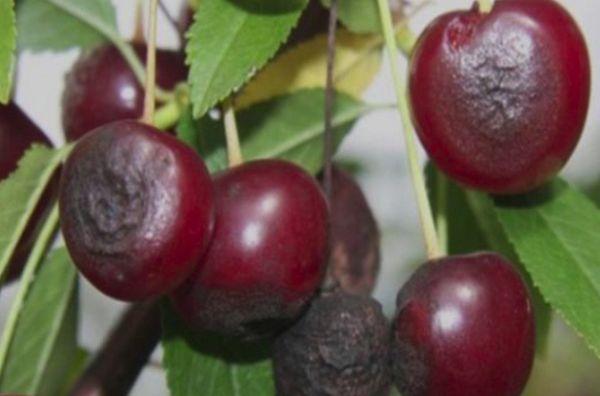
Spring processing
Before bud break, cherries are sprayed with fungicide. They dig up the earth near the trunk circle.
Barrel circle care
Throughout the growing season, it is necessary to weed the weeds in the radius of the cherry crown and loosen the soil. Autumn and spring digging is necessary for the destruction of wintering pests and fertilization.
Harvesting and storage
The sweet cherry is removed together with the stalk. Store in a shallow, spacious container in a cool place. The berries retain their presentation and taste for 2 weeks.

